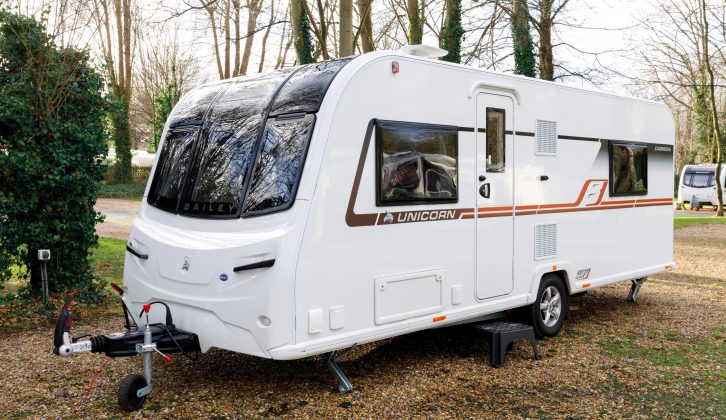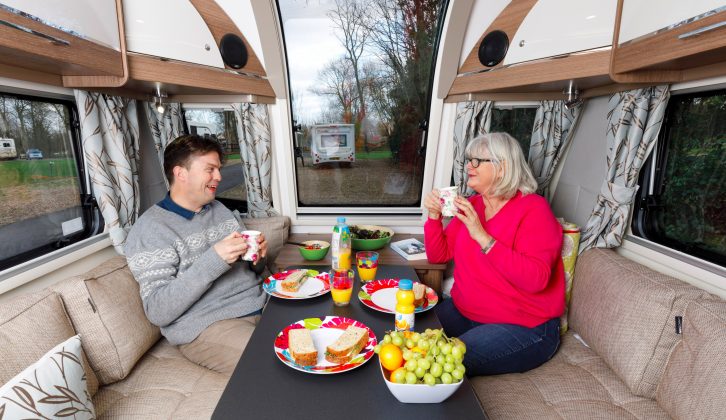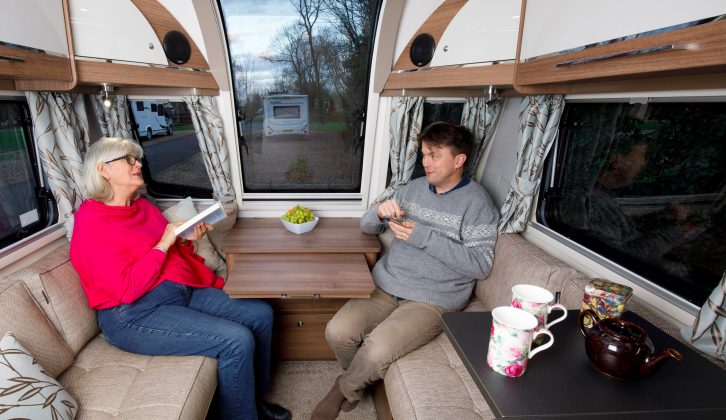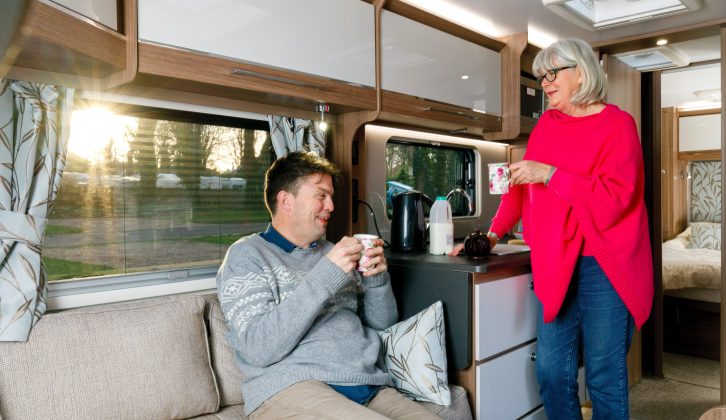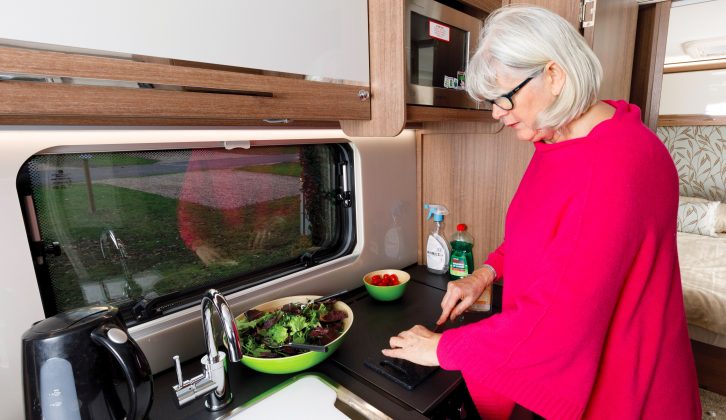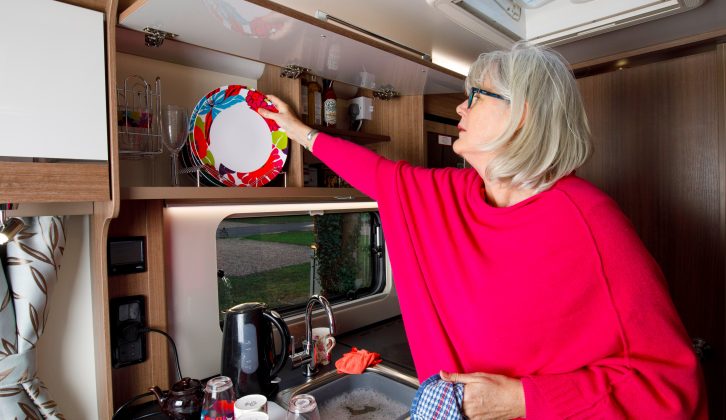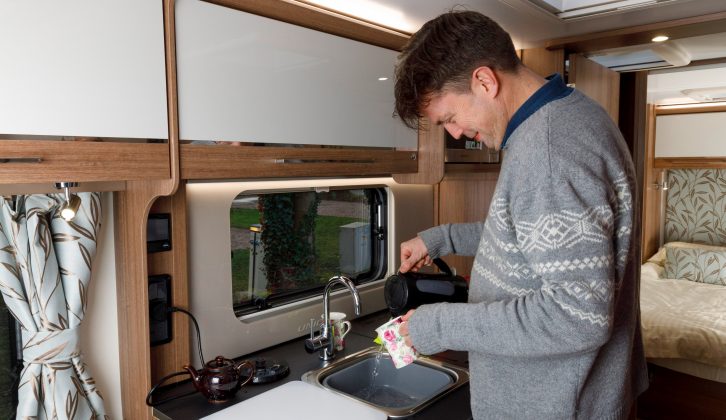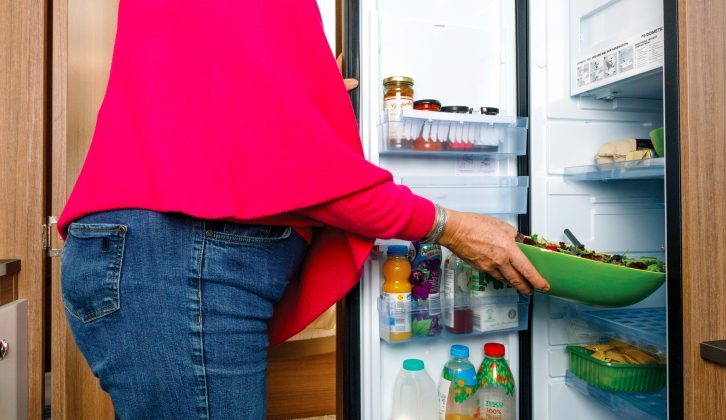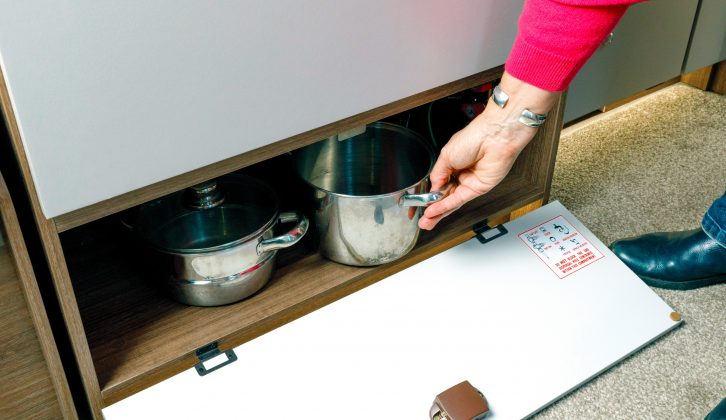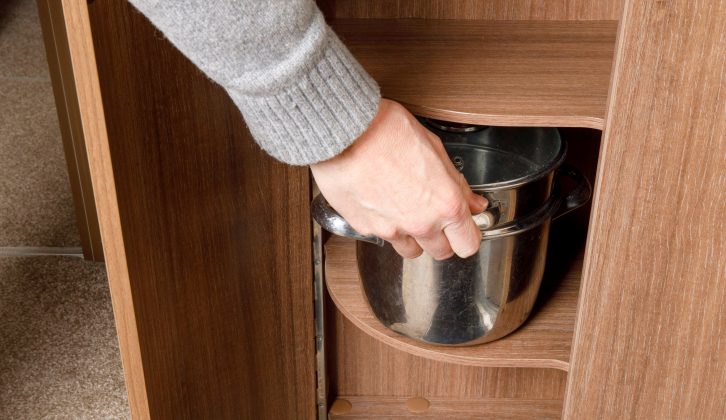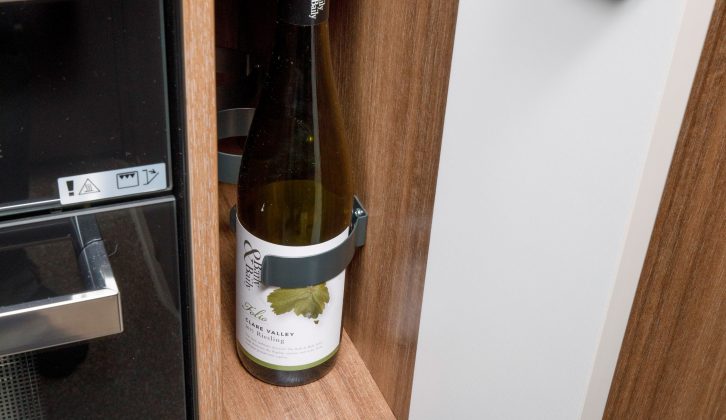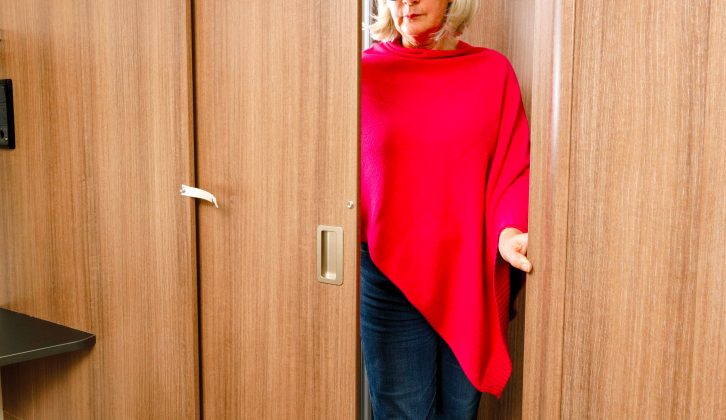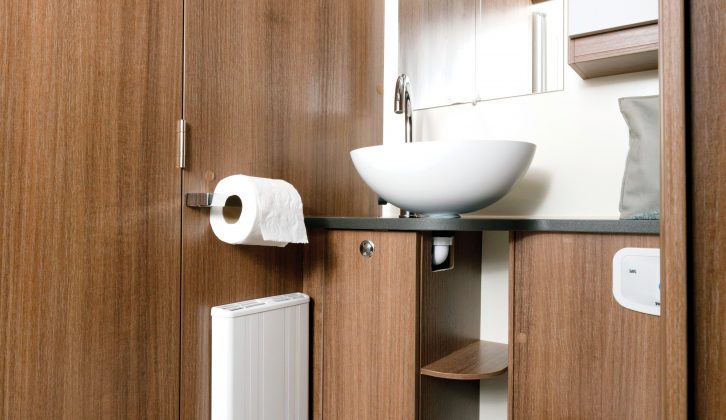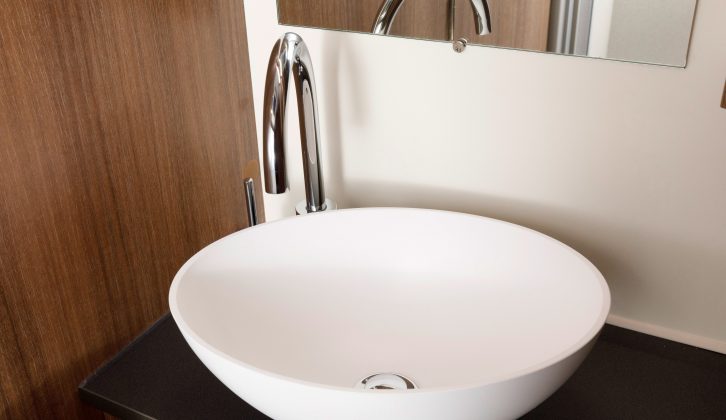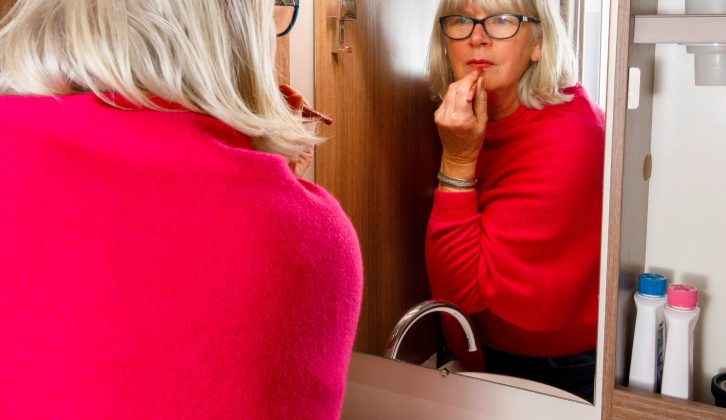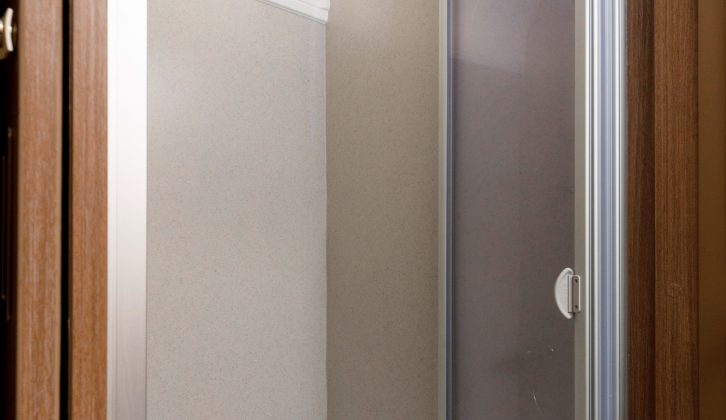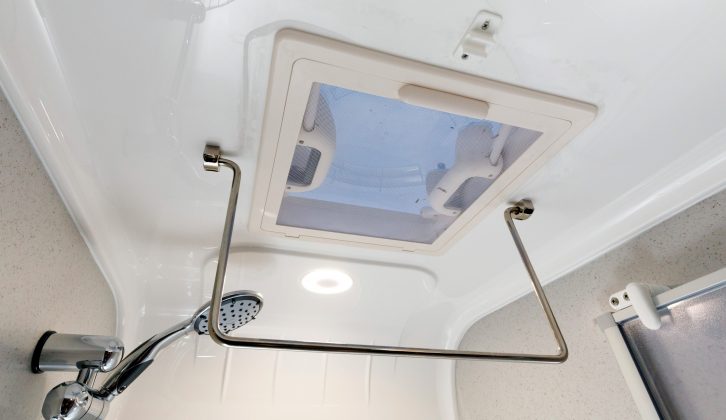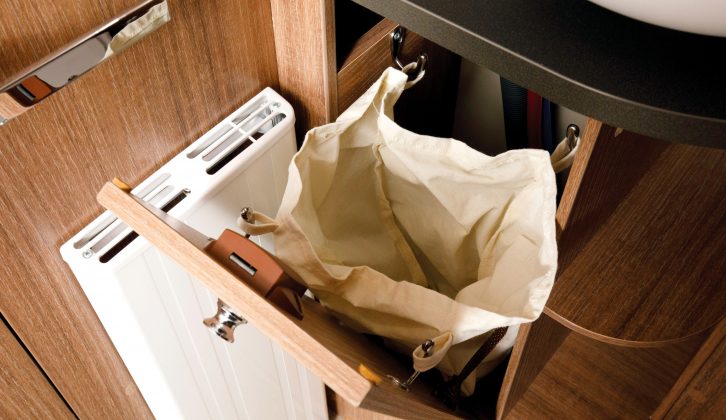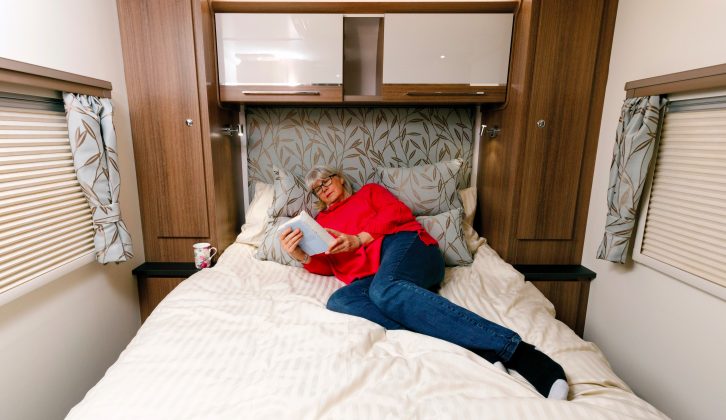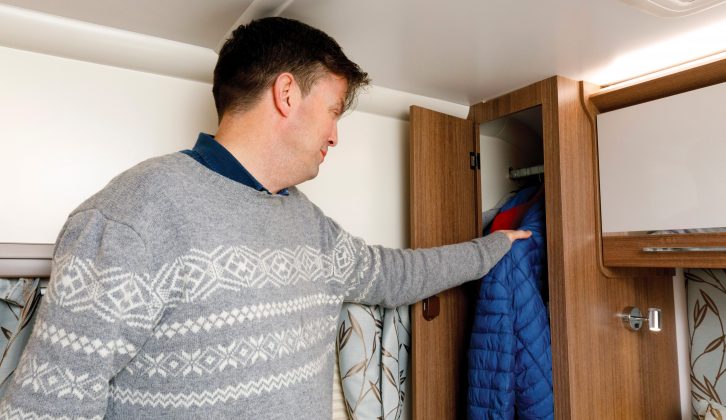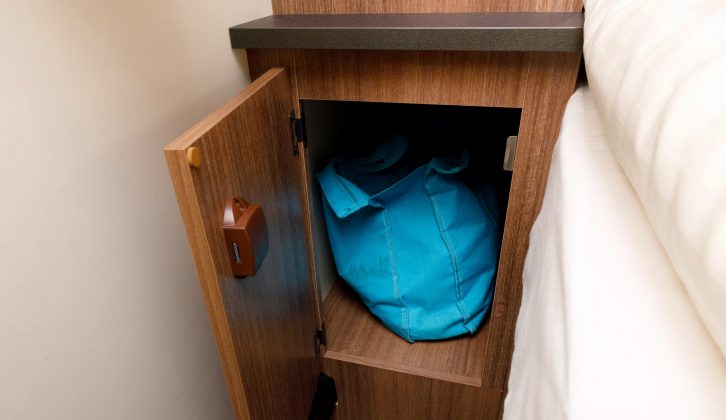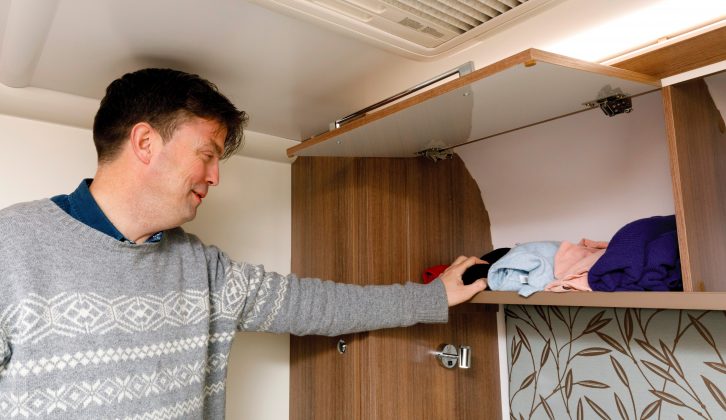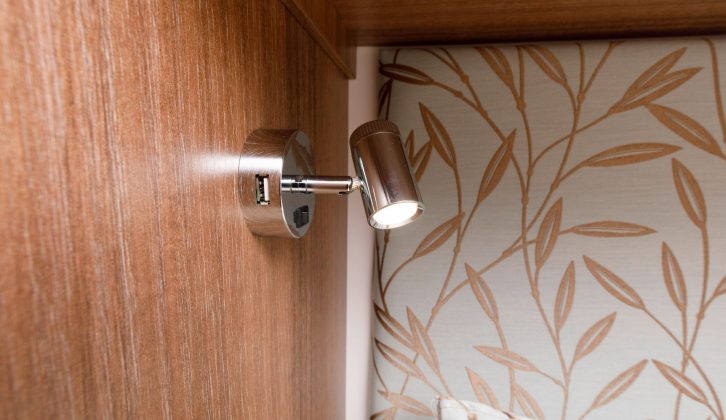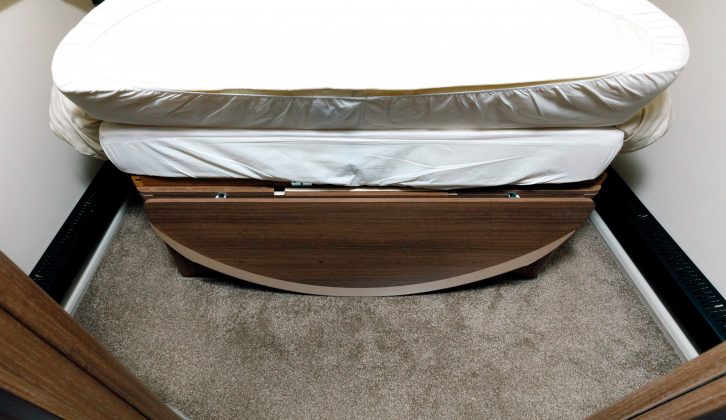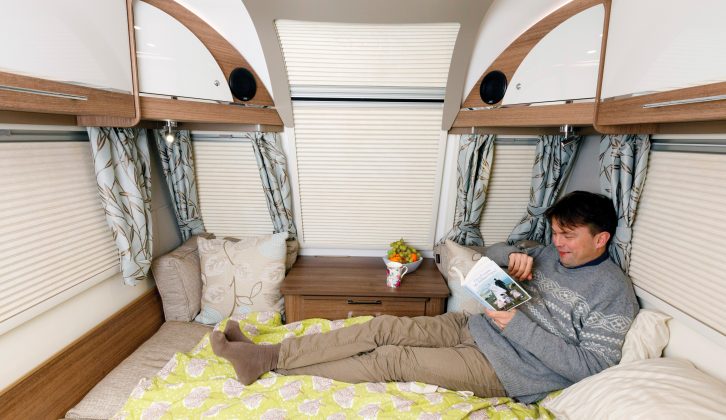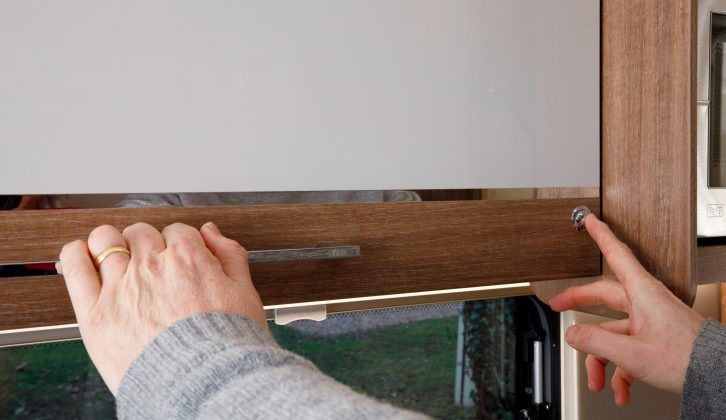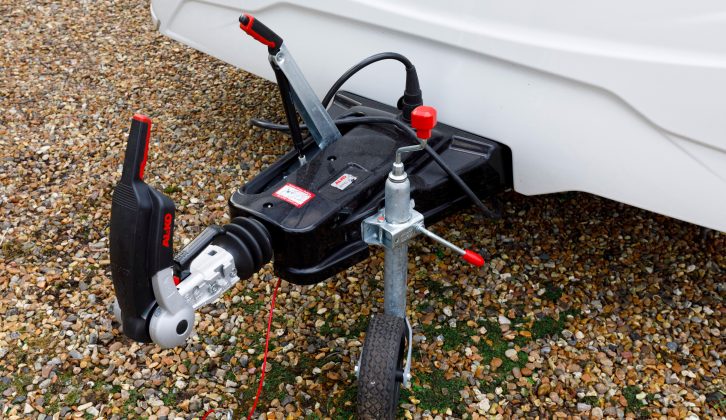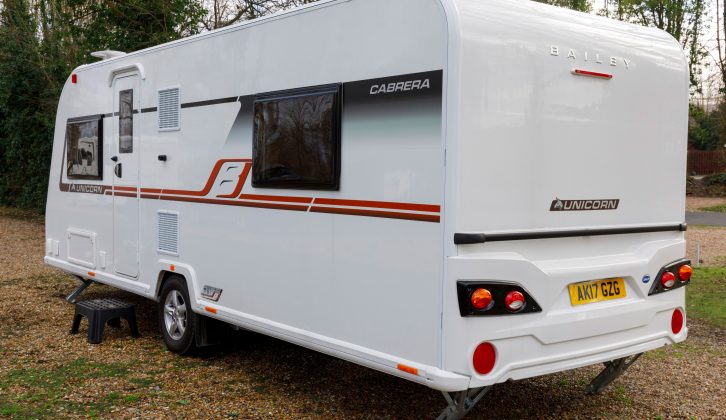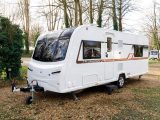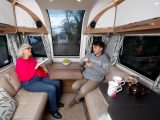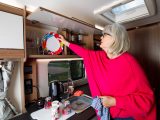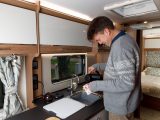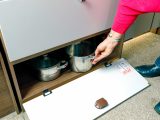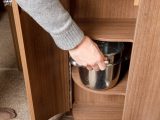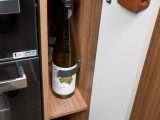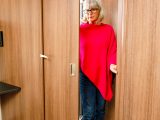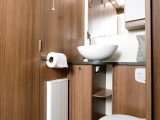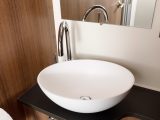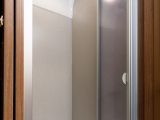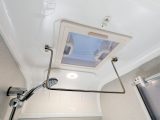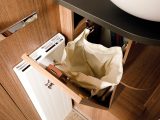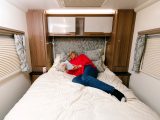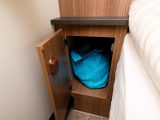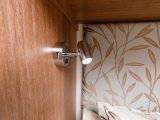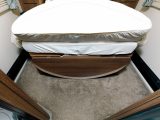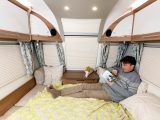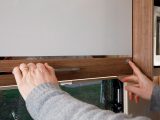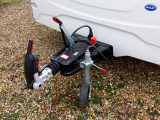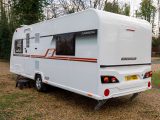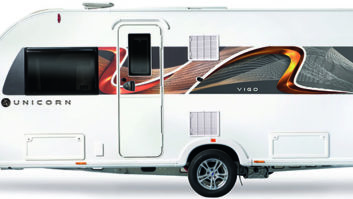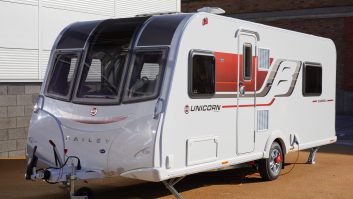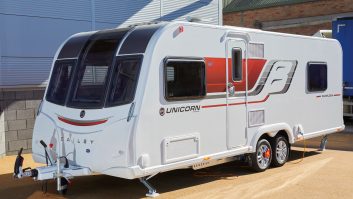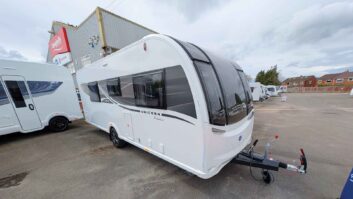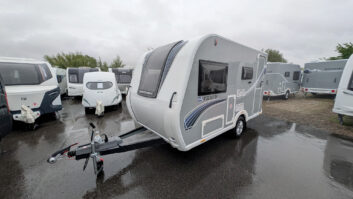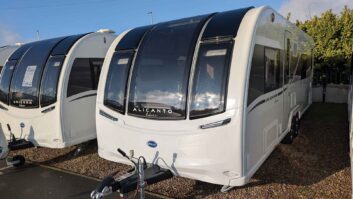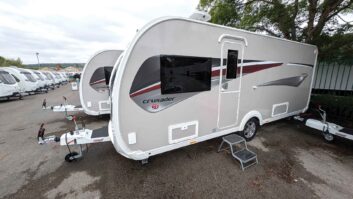Verdict
With their in-line island beds, the Cabrera and the Pamplona were always going to be useful additions to the Unicorn range of Bailey caravans, for customers who feel that transverse island beds are a bit of a compromise.
And in their new fourth-generation form, the Cabrera and Pamplona look very sharp.
The Cabrera’s homely interior should make this a pleasant caravan to own, and considerate design touches including the generous provision of USB and power sockets, will make it enjoyable to live in, too.
Our Tourer of the Year 2018 judges raved about the Cabrera’s revised kitchen and extended lounge seating, and praised the hinged end to the fixed bed.
A full live-in test hasn’t changed their opinion of this van – our reigning Best Tourer for Couples is a keenly priced four-berth that is a contender in a competitive class.
And to see other Bailey caravans for sale, click here.
Pros
We like the new-generation looks
It has Alde heating
The ‘sockets with pockets’ are a clever and useful innovation
It’s good to see a different solution in the ‘folding’ island bed
Cons
The freestanding dining table is awkward to access
The wooden hob cover is likely to split opinion
We don’t like the separate push locks on the overhead lockers
The Bailey Unicorn Cabrera and its twin-axle sister, the Pamplona, were relatively late entries into the previous generation of Bailey Unicorns.
This was possibly because they feature an in-line island bed layout that has only recently started to become more common in mainstream caravans – Bailey does not offer such a layout in its other two ranges.
An in-line island bed has been a staple feature in motorhomes for many seasons.
Caravans can take advantage of the extra width that they enjoy to offer transverse island beds instead, which results in a shorter vehicle overall.
The Bailey Unicorn Vigo, for example, which includes a transverse island bed, has always been a popular model.
But it seems there is a market for caravans with in-line beds.
They generally tend to be slightly longer and often entail having more space around the bed, which you can use when you get up in the morning.
Since the two new layouts made their appearance, the whole Unicorn range of Bailey caravans has had a complete revamp and entered its fourth generation.
This hasn’t just been a revamp under the remit of Bailey’s own caravan designers.
It has included the introduction of elements from Bailey’s motorhome range (the washroom clothes rail) and its Australian subsidiary (the wooden hob cover).
The Cabrera has not missed out on any of these changes. So how does a caravan that was still relatively new to the public fare now?
We took this 7.36m-long model to The Camping and Caravanning Club’s Chertsey site in Surrey to find out.
And, design-wise, the most noticeable change in the new-look Unicorns comes at the front.
The range was already known and appreciated for having a huge vertical window that allowed light to flood in and gave you a great view.
The only trouble with this was that, with the two side windows still a relatively conventional size for a caravan, the central window did look a bit out of place from the outside.
In previous generations, Bailey’s designers tried to soften this rather dramatic contrast, by incorporating decals above both side windows that gradually fade out higher up, for example.
But the solution the company has opted for in this fourth generation of Unicorns is far more satisfactory.
Two glazed panels (that are otherwise redundant) sit on either side of the central window, above the side windows, and continue up towards the roof to a height where most people at ground level would probably not be able to see their edge.
From a distance, this gives the very pleasing effect of making it look as if the whole top of the front of the caravan is one huge tinted window.
The front of the van has also been remodelled lower down.
While this is mostly noticeable on the inside (mainly thanks to the removal of the front bulkhead), on the outside, there is a smoother finish, with the omission of the small brown decal on the front of the Unicorn 3 that looked like a smile.
The two grab handles have also been rotated, so they are now nearly horizontal, rather than vertical.
Bailey has continued with brown as the main colour for the decals down the side, but they are only brown lines now, not blocks.
The large ‘B’ for Bailey is also smaller and placed further back along the side of the caravan.
In addition, there’s one final adjustment right at the back, in the shape of a single grab handle that stretches across the rear panel.
So whenever you are in a tricky spot, trying to nudge your caravan across uneven ground to a hard-to-reach pitch, at least you can rely on many hands being able to help you.
It’s a keenly priced four-berth that is a contender in a competitive class
Pitching & Setting-up
On site, the smoothed-down front section made hitching and unhitching a doddle.
You don’t have to worry about the jockey wheel handle getting in the way of the front locker because there isn’t a front locker.
The four heavy-duty corner steadies were all easily accessible, while the position of the cassette toilet on the offside should mean that even if you were to put up an awning (and we felt that it was a tad cold to do so), you wouldn’t have to remove the cassette from inside one.
One other change Bailey has made that is worth pointing out here is the gas bottle locker, which is also on the offside.
This used to be designed so that one gas bottle was directly behind the other. Now they sit side by side.
Quite apart from the extra space this generates in the kitchen inside, it also means both bottles are now equally accessible.
External access to the nearside underseat area means whipping your campsite furniture out for a quick al fresco meal on arrival should be easy.
And if you really want to make a party of it, Bailey supplies an external mains socket and an external barbecue point on this caravan, too.
En route to the site, how was the Bailey Unicorn Cabrera when hitched to our tow car?
Our journey was not particularly long, but it involved traversing the leafy avenues of Surrey at rush hour on a wintry morning and evening, so the towing outfit was fairly put through its paces.
With Al-Ko ATC fitted as standard and an AKS hitch stabiliser, the Cabrera coped well throughout, and was easy to manoeuvre, even at the near right-angle turn into the site.
But it wasn’t a totally relaxed journey, even with a tow car that was a pretty good 85% match.
You were always aware of the 1.5 tonnes of caravan behind you, so even with gradually changing down gears, a little extra use of the footbrake was needed.
If this is a concern of yours, it might be worth trying out the heavier Unicorn Pamplona.
Living
It’s good to see that the entrance door is of the stable variety, making it ideal for dog-lovers who occasionally may need to briefly leave Fido behind.
There is also a window in the door, a shelf above it for key and a flyscreen, but it is disappointing to see that you don’t get a proper interior door handle, just a plastic latch.
It is, however, a very comfy and, thanks to that large window, airy front lounge that greets you.
Bailey’s removal of the front bulkhead really does pay dividends in enhancing the space, while the muted mushroom and pale blues of the upholstery and the white panels of the overhead lockers enhance the feeling even more. The central window only opens a short way, however.
Bailey is unusual among manufacturers in including a front central chest with a top that does not slide out flat.
This does at least mean that you can open and close the chest without causing a sudden jolt – and there is also one less piece of plastic engineering to go wrong.
There are two mains sockets next to this chest. In a clever touch, these face out sideways, which makes it much easier to fit the plug.
These sockets are in addition to the mains 12V and aerial socket included on the panel to the right of the door – a position for the TV which should allow everyone to see it.
You’ll find a DAB radio with USB and Bluetooth connectivity fitted as standard in the nearside front corner overhead locker, with speakers nearby.
The USB sockets fitted in the directional spotlights in this van impressed our judges in the Tourer of the Year Awards 2018, particularly because on the wall next to these lights, you will also find a soft pocket that should be able to house your digital device while it charges.
‘Sockets with pockets’, one of our judges dubbed this arrangement, and it seems an apt description.
These lights, two LED lights in the ceiling between the central window and the rooflight, and ambient lighting, keep everything well illuminated.
The wooden edging to the nearside seat by the door should keep out some draughts, too.
The one slight grumble, aside from the door handle, is the table. You will have to use it if there are four of you, because the pull-out flap on the chest isn’t big enough for four. And it will fit four of you.
But it is stored in a rather awkward-to-reach slot under the bed at the back – so you could potentially have to disturb quite a bit to get it.
Kitchen
With that wooden hob cover and a huge extension over the side of the lounge, you can see how Bailey can claim to have increased kitchen workspace by 30%.
But while the hob cover is a huge asset when you are just putting food together, when raised it does partly obscure the light coming through the window, so it is useful to have good artificial lighting over this part of the van – as it is to have more of those sideways-facing mains sockets in an area beyond the square sink that is just large enough to accommodate a small kettle.
Underneath, changing the shape of the Bailey Unicorn Cabrera’s gas bottle locker has paid huge dividends in providing two drawers and a large locker that wouldn’t be out of place in your average home.
Across the way by the door (under where the TV would be) there is a shelved cupboard with even more space for pans.
The lockers above the worktop are a good size too, but we do wish Bailey wouldn’t be so keen to produce locker doors with push locks that are separate from the handle.
We can see why they have gone for this, as it puts less stress on the handle and makes it less likely that the door will fly open by accident.
But the two handles are so far apart, you have to use both hands to open the door, and there is a risk that you might forget the push stop is there and yank the handle.
You do at least get an 800W microwave, a dual-fuel four-burner hob, and a Thetford Caprice combined oven and grill.
To the right of this is a slim cupboard complete with a wine rack.
Across the way, there is a 133-litre automatic energy selection Dometic fridge with removable freezer compartment, with the fuse boxes below it and another locker above.
Washroom
The 2018 Bailey Unicorn Cabrera’s central washroom does provide a huge area for getting dressed.
But it’s a shame that the front partition door, when you push it open, misses connecting with the offside toilet door by at best an inch.
If you were able to seal off the toilet, you could then also have a clear pathway through to the bedroom at all times, while anyone using the toilet would still have privacy.
The offside washroom, which includes the toilet, has a medium-sized mirror which, surprisingly, is the only mirror fitted in the entire caravan.
There is an adequate washbasin, shelving and a toilet roll holder.
A pull-out laundry basket has been a feature of Unicorns for some time, but the one here is large enough to only hold washing from one weekend.
The shower on the nearside is much better. It is huge, with its own light and that clothes rail hanging down from a rooflight.
There is a bit of a step from the wheel arch, but it doesn’t really get in the way.
Beds
In recent years, caravan makers have taken to fitting island beds that slide back, to provide extra space and create an often not very comfortable day bed.
With the new Unicorns, Bailey has taken a different direction.
The bottom semi-circle of the bed can be folded down and the cushion that covers it removed (you will need to find a place to stow, this, however).
Before you quite rightly say that loose cushions in beds have an annoying habit of sliding away during the night, Bailey has thought of that – a large metal rim keeps the semi-circular cushion in place when the bed is fully extended.
This arrangement creates ample space around the bed, while the bed itself is still comfortable to sit up in, with two more of those combined spotlights and USB sockets in the headboard.
A large rooflight and two big windows allow in plenty of daylight, too.
There’s a dresser shelf in each of the front corners of the rear bedroom, with more sockets for a potential second TV above the nearside shelf.
The large double bed in the front is easily made up from slats, but the settee backrests are so unstructured, they don’t make the most solid of mattresses. At least you have easy access to those ‘sockets with pockets’.
And if you fit a TV set by the door, it would be very easy to watch from here.
Storage
In this Bailey Unicorn Cabrera, storage in general is pretty good, even beyond the kitchen.
The underseat areas in the lounge are both accessible, not just by lifting the slats, but also through internal access flaps.
For the nearside settee, this flap is on the side, which provides an easy place to store muddy boots before you step inside.
There is one overhead locker on each side of the front lounge, both half shelved only, with the aerial taking up some of the nearside locker. Corner lockers provide a little more space.
The island bed in the rear can be raised to provide a huge clear storage space, once you have tackled the table storage.
There are two narrow, but full-height, unlit wardrobes on either side of the bed, with cupboard space below.
And what about kit? The standard spec in the Cabrera – the size of hob, oven and fridge, and the presence of Alde heating – is not dissimilar to many of its rivals.
It doesn’t make use of the Alde heating system to provide you with a ladder-style heated radiator in the washroom, as some manufacturers do, and it doesn’t have an external shower.
But then it is marginally more affordable than some of the other caravans that do offer these.
Where the 2018 Bailey Unicorn Cabrera scores – and this is most likely a result of it only recently being revamped – is in the little extras.
The ‘sockets with pockets’ idea is excellent, and looks bound to catch on.
The folding island bed is a good idea that works better than some rolling beds we have seen, and the clothes rail in the shower is very handy.
The wooden hob cover, however, is probably more a matter of personal taste.
Technical Specifications
| Berth | 4 |
| MiRO | 1377 kg |
| Payload | 155 kg |
| MTPLM | 1532 kg |
| Shipping Length | 7.36 m |
| Width | 2.28 m |
